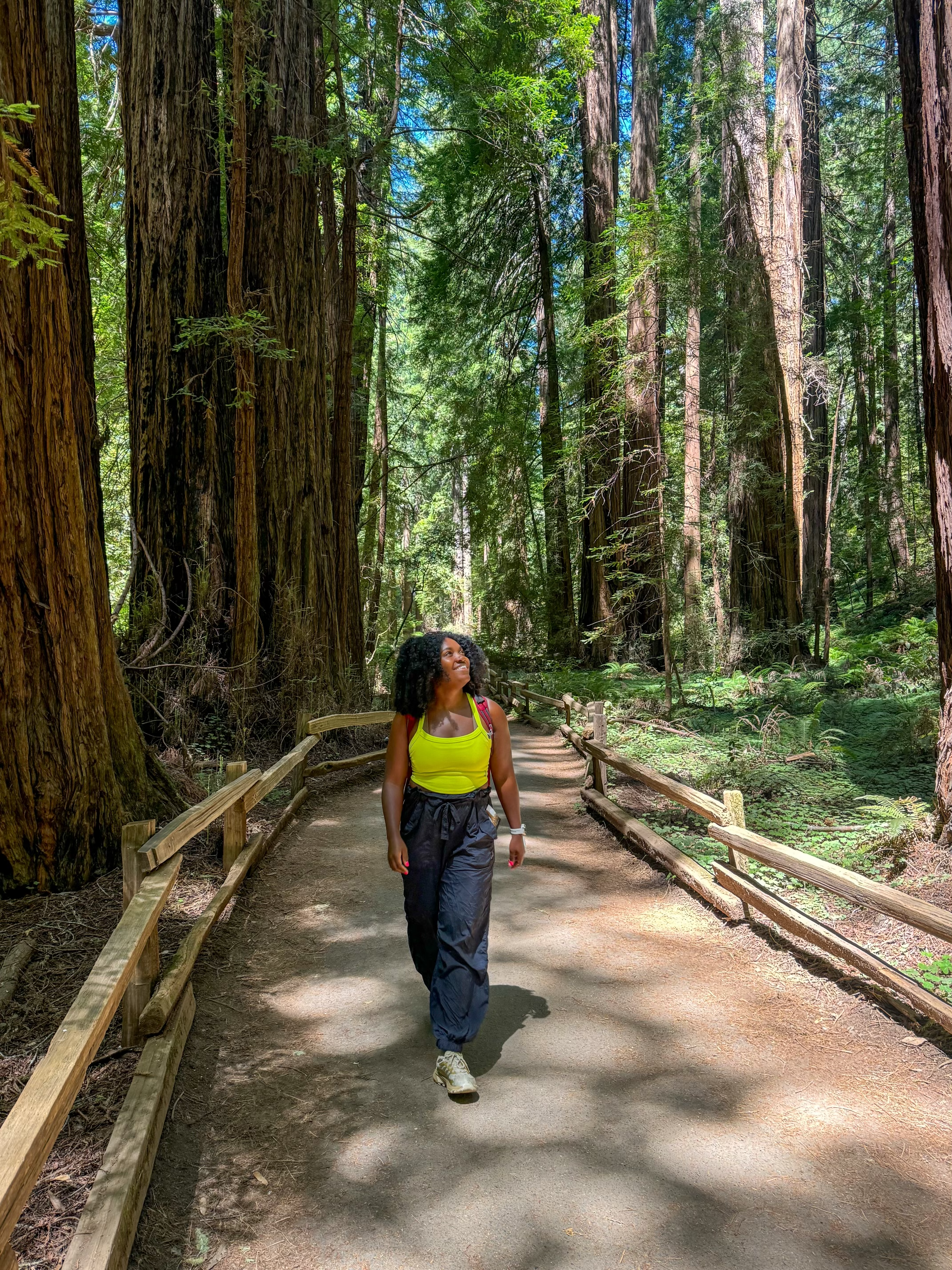Post Summary: Hiking essentials
Disclaimer: This post may contain affiliate links, where I receive a small commission on sales of the linked products at no additional cost to you. We only recommend products we genuinely love and use!
So you’re new to hiking and getting outdoors but unsure what to pack when hiking before hitting the trails. You might be thinking, “What if I need this?” “What should I wear?” or “Is this everything?”. Don’t worry; I’ve got you covered! In this blog post, I will give you the ultimate packing list for a successful hike and why you’d want to have these items.
The 10 Essentials
Day Pack

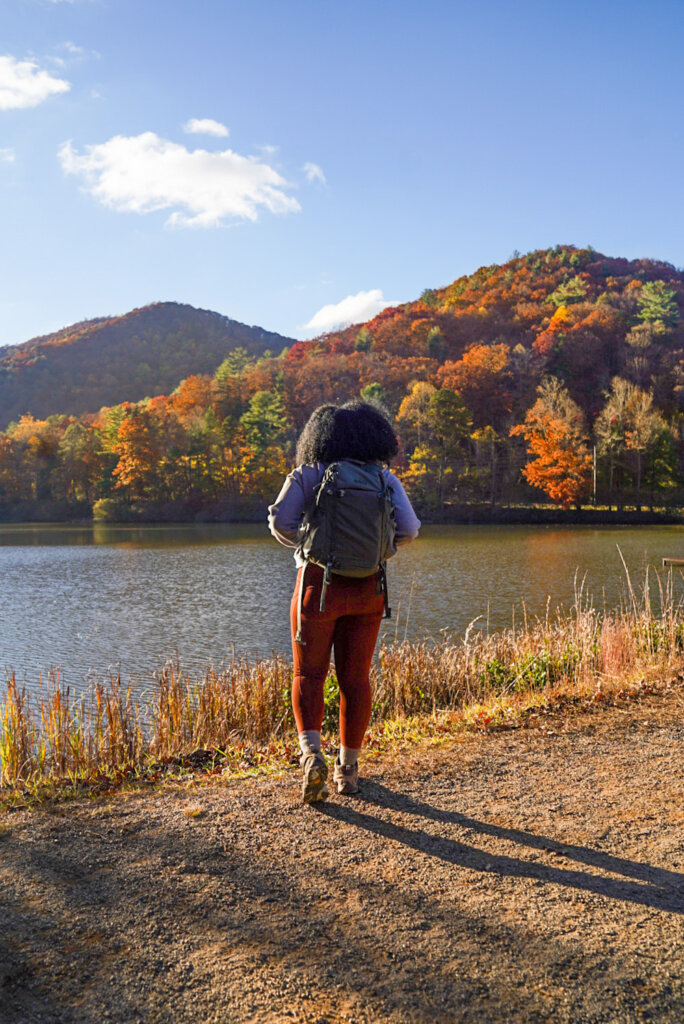
As you might have guessed, one of the main things you’ll need to pack when hiking is something to carry all your things in! You might not want to use just any old backpack, but if that’s all you have, it’s fine! But if you’re looking for the ideal daypack, then there are a few things you may want to consider.
Comfort: When you have a full pack, you want something comfortable on the shoulders and easy on your back. Correct padding and straps play a huge part in this.
Capacity: You don’t need anything huge for your normal day hikes. I like to have something with multiple compartments so I can put my essentials in certain pockets or areas for easy access.
Bladder Compartment: Although it’s not required, it’s much more convenient to have a pack made to carry a bladder. This helps you cut down on stopping each time you want water, and you don’t have to worry about misplacing a water bottle.
Personality: Lastly, you want something that fits you! There are soo many different day packs out there, so find something that you love and fits your personality!
Here are a few of my favorites:
- Budget-friendly: Osprey Daylite Plus Pack
- Intermediate hikers: Trail 25 Pack or Trailmade 60 Pack – Women’s
Water Bottle / Bladder

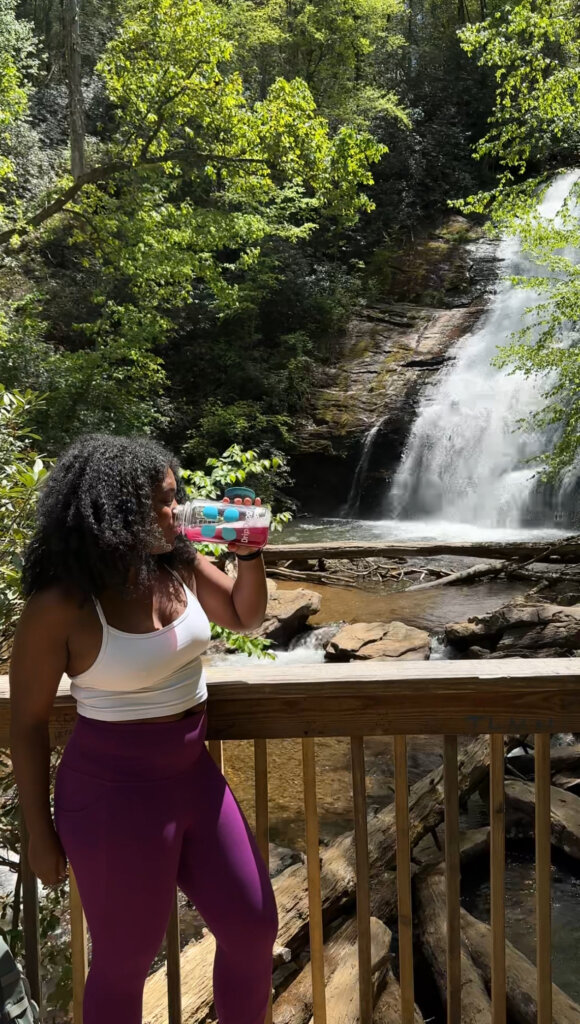
Water is extremely important to have whenever you are enjoying the outdoors! You do not want to get caught in a situation where you didn’t go over your list of what to pack when hiking, and you realize you forgot your water. Dehydration is dangerous, and you want to avoid it at all costs.
I recommend getting a Nalgene or a stainless steel bottle, like Yeti or RTIC, because they normally hold about 32 oz or more and fit perfectly in the side pouches of daypacks.
Now, if you are getting into hiking at the next level, consider getting a water bladder! These hold much more water, so you can stay out longer when hiking and not worry about running out for a little longer than just a water bottle.
And if you can have both, even better! You really can’t have too much water when hiking. Of course, make sure you’re not overdoing it and adding too much weight to your pack because then you’ll tire yourself out due to carrying so much weight!
If you need a few recommendations:
- Water Bottles:
- Budget-friendly: Nalgene Sustain Graphic Wide-Mouth Water Bottle
- Intermediate hikers: Hydro Flask Lightweight Wide-Mouth Vacuum Water Bottle
- Water Bladders:
- Budget-friendly: Camelbak Crux 1.5l Reservoir – 1.5 Liters
- Intermediate hikers: 3D Hydro Hydration Reservoir – 3 Liters
First Aid Kit
Accidents happen right? I mean, one minute you’re just strolling along, enjoying nature, then all of a sudden, the tree root wants to get your attention. When figuring out what to pack when hiking, you always want a first aid kit on hand just in case any scrapes or falls happen and you need to bandage yourself up quickly!
First aid kits can vary from small kits made for day hikes, which will have a few bandages, ointments, gauze, etc., to larger kits that can include splints, emergency blankets, wraps, and more! So, consider the level of difficulty of your hiking or what you feel most comfortable having with you when you’re out hiking when figuring out which size you want to go with.
The ones that I have used before are:
- Budget-friendly: Day Hike First-Aid Kit
- Intermediate hikers: Hart Outdoor Extended First-Aid Kit
Snacks
If there’s anything I make sure I pack when hiking, it’s my snacks! Almost as important as water, you should consider packing a few snacks for your day hike. When I tell you, I don’t know how many times I’ve hiked to my destination and needed that pick-me-up snack to fuel my journey back to the car!
Plus, your body burns a lot of calories while hiking, so you want to make sure you can replenish those nutrients. Some of my go-to snacks are Clif Bars, Bobo’s, and Honey Stingers!
Bear Spray
Another one of those “better safe than sorry” items when determining what to pack when hiking, I like to keep the bear spray on me just in case. Nature can be unpredictable.
In the southeast, when it comes to bears, we only have black bears. Most of the time, black bears are aware of where you are well before you can see them and steer clear of any interaction. However, on rare occasions when a bear decides to approach you, you want to be prepared.
So, I would follow these steps in the event you do encounter a black bear on the trails:
- Stay calm, and don’t run
- Make yourself look larger
- Speak in a calm, firm voice
- Avoid direct eye contact
- Back away slowly
- Make noise if the bear approaches (such as yelling “Hey bear”, an air horn, clanking things together)
- Use the bear spray
Pro Tip: I like to keep my bear spray in the water bottle pocket of my day pack for quick and easy access. I use Counter Assault Bear Deterrent Spray.
Sunscreen
A lot of people forget to pack sunscreen when hiking. Sunscreen is important to have on hand whenever you are going to be exposed to the sun for a prolonged period of time. You definitely don’t want to get caught without this in the warmer months!
Here are a few that I recommend:
- Budget-friendly: Sun Bum Mineral SPF 50 Sunscreen Face Stick
- Intermediate hikers: Sun Bum Mineral SPF 30 Sunscreen Spray
Headlamp
The last thing you want when hiking, is to get caught in the dark before getting back to your car. If you ever decide to take a sunrise or sunset hike or just lose track of time on a late hike, you will need more than just your phone flashlight to see the trail.
A good headlamp is essential when packing for a hike! You want to grab one that is bright enough to light up the trail and see your surroundings; I recommend something around 200-300 lumens.
Here are some worth checking out!
- Budget-friendly: Black Diamond Astro 300 Headlamp
- Intermediate hikers: Black Diamond Spot 400 Headlamp
Pro Tip: It’s also a good idea to have a spare set of batteries in your pack as well!
Rain Jacket
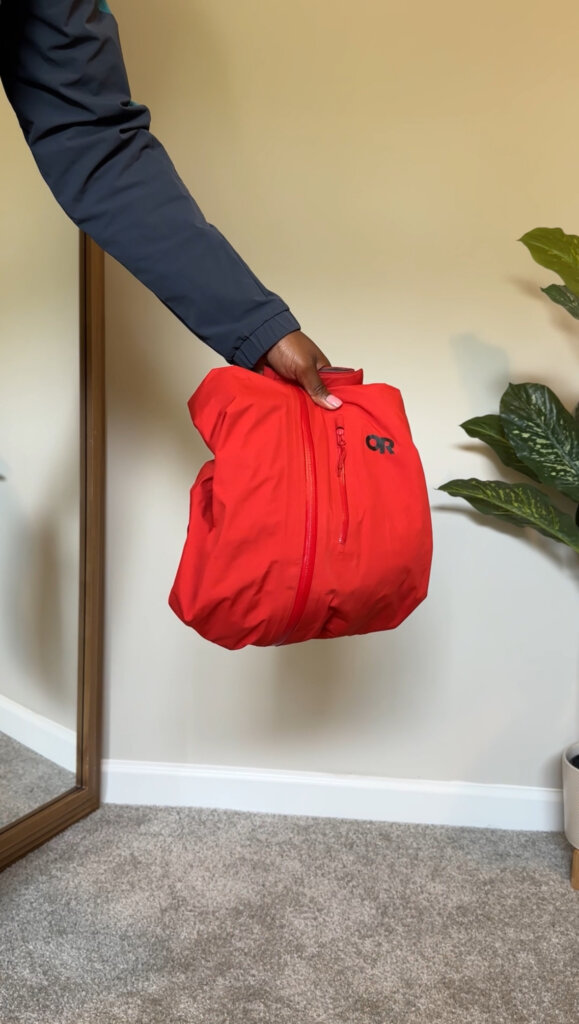

With the weather unpredictable at times, you’ll want to keep a rain jacket handy. There have been plenty of times we got caught in a downpour and luckily had our rain jackets ready to go! Many rain jackets pack down into one of the jacket pockets to help save room.
You definitely want to make sure you get a good quality rain jacket. The last thing you want is to be hiking in the rain, but you’re still getting soaked because the rain is soaking through your jacket! Here are a couple that I recommend to pack when hiking:
- Budget-friendly: REI Co-op Trailmade Rain Jacket
- Intermediate hikers: Singin’ In The Rain Packable Jacket
Navigation
This is also a key item because you do not want to get lost in the woods and not know how to get back to your car. If you know how to use a compass or can access a paper map, then that’s great; you can pack those! However, many of us, including me, don’t have that skill.
One alternative I HIGHLY recommend is to download the AllTrails app. This app has the majority of the trails you’ll ever encounter. It gives you the exact coordinates of where the trail starts and ends, shows where the viewpoints are, tracks your progress on the trail, and can even tell you when you are getting too far off the trail.
The trails are also downloadable, so if you are hiking in an area with little to no cell phone service, you’ll still be able to stay on the trail and track your progress.
Proper Gear
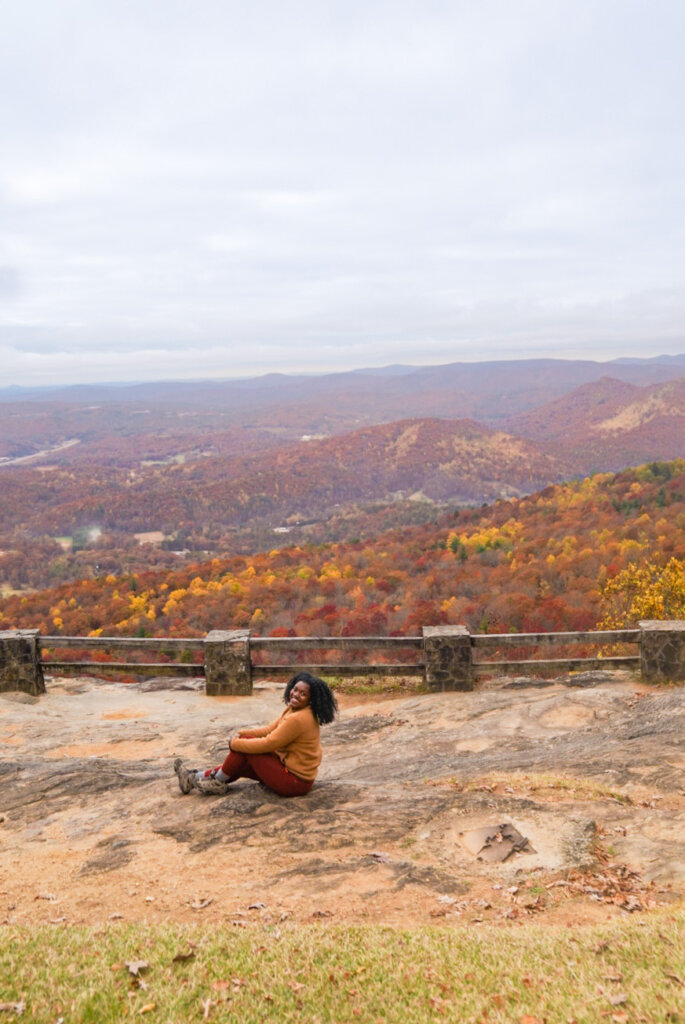

A successful hiking trip starts with the proper gear. In the warmer months, you’ll want to wear dry-fit/quick-drying clothes, hiking socks, and hiking shoes or boots.
In the winter months, you’ll want to wear some base layers, a mid-layer, and a top layer to stay warm, along with your hiking socks and shoes/boots.
Here are a few of my favorites, in case you don’t know where to start!
- Hiking Tops
- Budget-friendly: Free People All Clear Solid Cami
- Intermediate hikers: Fabletics Oasis Twist Built-In Bra Tank
- Hiking Bottoms
- Budget-friendly: Fabletics Define PowerHold- High-Waisted 7/8 Legging
- Intermediate hikers: RecTrek Zip-Off Pant
- Hiking Socks
- Budget-friendly: Smartwool Performance Hike Light Cushion Crew Socks
- Intermediate hikers: REI Co-op Merino Wool Lightweight Hiking Crew Socks
- Hiking Boots
- Budget-friendly: HOKA Kaha 2 GTX Hiking Boots – Women’s
- Intermediate hikers: Women’s Moab 3 Mid Waterproof
- Hiking Shoes
- Budget-friendly: Oboz Sawtooth X Low Hiking Shoes
- Intermediate hikers: HOKA Anacapa Breeze Low Hiking Shoes
ALSO READ: 15 Mountain Hikes In Georgia
Extra Layers
It’s always good to pack an extra layer of clothes when hiking, especially if you get cold easily. For me, it comes in handy on mountain hikes because there is usually a temperature drop and wind at the top, or when I take sunset hikes and the temperature drops with the sun.
You also want warm layers in the winter months to help keep your body warm. There are many different base layers out there. You can get them for cheap from places like Ross or Marshall’s, but if you want some specifically for hiking, I recommend getting them from REI.
Quick Dry Towel
If there’s an item that I would say most people need to pack when hiking, it would be a quick-dry towel! And let me tell you why.
Having a quick-dry towel is perfect for summer hikes, especially if you have to cross creeks or decide to hop into a swimming hole! It’s also perfect for wiping sweat during warmer hikes, drying off if you get caught in the rain, and draping over your head to block the sun if you forget to bring a hat. There are so many great uses!
- Quick Dry Towels
- Budget-friendly: REI Co-op
- Intermediate hiker: REI Co-op Multi Towel Lite

